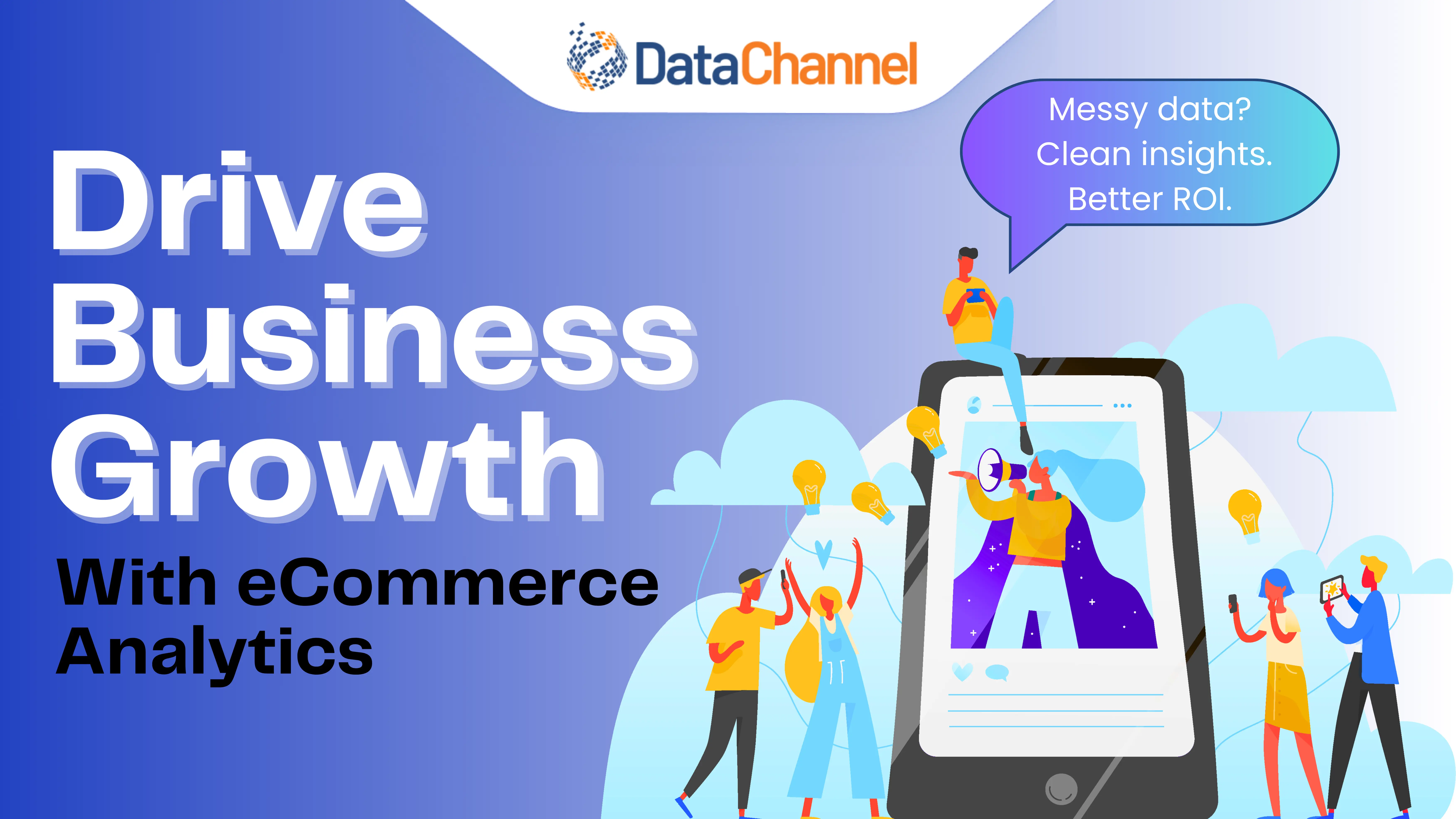
What Is Data Aggregation Tool – Everything You Need To Know
What Is Data Aggregation Tool – Everything You Need To Know
Deciphering the term
Data aggregation refers to a process in which information is gathered, compiled as required, and expressed together with the purpose of preparing combined datasets for data processing. It is used to statistically analyze the data. Another purpose of data aggregation involves the collection of information based on variables such as age, profession, and similar others. The information is grouped accordingly and used to personalize user experience and make choices regarding content.
Also, the collected data is used to form advertising strategies that can appeal to individuals belonging to groups for which the data has been collected. For instance, a site that sells stylish earphones will look forward to forming advertising strategies based on parameters such as age groups. A type of data processing is OLAP (Online analytical processing) which is a simple kind of data aggregation in which, basically, an online reporting mechanism, which processes the information, is brought to use.
Data aggregation can be based on user preferences. A single point for the collection of personal information is provided to the users by some websites. There is a type of data aggregation which is sometimes referred to as “screen scraping.” In this kind of aggregation, a single master personal identification number (PIN) is used by the customer to allow access to their accounts.
Going into the detail
The United States of Geological Survey puts it as, “when data are well documented, you know how and where to look for information and the results you return will be what you expect.”

The information is gathered by referring to public records and databases. This is then converted into documents containing reports, and then as a next step, it is sold to businesses, local or state agencies. This information comes as a use for marketing purposes as well. Different versions of records for the gathered data are made available for agencies and individuals. Individuals can request records as per their preferences.
A look at the components
The data aggregation process has a set of components, which are as follows:
- The raw data: Acts as the source for aggregation.
- The aggregate function: Required to perform computation on the raw data.
- The aggregated data: The result of the aggregation that the raw data was subjected to.
Steps to be considered
There are three steps that are ordered in a sequence in a general data aggregation process. Each of the steps covers a series of activities on these constituents, which are as follows:
- Preparing the raw data: In the first step, one is supposed to prepare the raw data required for aggregation. The data is collected from the source into an aggregation unit termed an aggregator. Locating, extraction, transportation, and normalization of raw data are the basic steps involved in the process.
- Moving forward with the aggregation of raw data: A function used for aggregation is implemented on the raw data which transforms it to aggregate data.
- Aggregate data getting post-handled-Now, the aggregated data is subjected to different ways of handling it. It can either be saved into some sort of storage, made available to fulfill other purposes or can be turned into a part of some project.
The vitality of the Internet
The Internet plays a major role as an application in the huge cycle of data aggregation. Owing to its potential of consolidating information together in bundles and manipulating information has a major application in data aggregation.This is commonly known as screen scraping. Passwords and usernames are consolidated in the form of PINs. This enables users to gain access to a wide variety of websites that have been protected by PINs. Even by having access to merely one master PIN line can access several websites containing personal information.
Online account providers include people from a variety of fields. Some of them are stockbrokers, financial institutions, airlines, frequent flyers, and email accounts.On an account holder’s request, information can be made available to the data aggregators by making use of the account holder’s PIN.Such services are offered in different forms. These can be offered on a standalone basis or can be concatenated with other services such as those in the finance departments.These are mostly available in conjunction with services such as portfolio tracking or bill payment made available by certain specialized websites.These are also available as additional services that can augment the online presence of enterprises that have been established somewhere outside the virtual world.
Many pioneering companies having an internet presence consider the value of offering an aggregation service as an important aspect. Mainly the fact the web-based services are enhanced, and visitors are attracted taken into consideration.Also, there is this possibility that users of the services will be drawn to the website, which is acting as the host quite frequently. This is one such factor that keeps aggregation services in demand.
Data aggregation for businesses on a local scale
When compiling information regarding the location for businesses that have been set up on a local scale is taken into consideration, there are a number of major data aggregators existing out there that make a collection of descriptions, hours of operation, and other relevant and significant information.Then a series of validation methods are implemented to validate the accuracy of the same. Basically, this is done by taking information from different sources and comparing it with what is currently available in the database. Accordingly, databases are updated.

Approaches to solving ineffective data aggregation which no longer exist
The traditional approaches which were used for solving data aggregation tools are no longer sufficient.
New server hardware: Introducing additional hardware to the BI applications, which mostly rely on RDBMS infrastructure, perform only minutely faster.So it’s quite clear that the equipment acquisition costs are merely additional expenses and do not yield the desired improvements or even a minimum of the exponential performance required by the latest operational applications.
Creating derivative data marts, OLAP cubes, de-normalization, and partitioning: These techniques have been tried, tested, and in usage over all these years and are more important than other major quick fixes. These have been in existence for a long time to perform query performances. But looking at it from the rational aspect, the tuning requires time and is a continuous process. Stats say that it will not improve query performance in a way that is suitable for delivering timely reports as required by businesses.
Report caching and broadcasting: Caching works to provide some relief in the performance. But, global organizations that are in service for geographically dispersed users find difficulty allocating enough blocks of time to process these reports.The results of caching and broadcasting of reports are stale, and there are reports that are canned and are old by some hours or days. These provide benefits up to certain limits in environments where ad hoc and on-demand reporting is required.
Summary Tables: There has been anecdotal evidence suggesting that organizations build summary tables in only a limited number that are suitable for covering a very small percentage of the user requests that can be possible.The existence of several dozens of summary tables introduces a maintenance burden that quickly outweighs their incremental benefits.
What can be the legal implications?
Financial institutions have raised concerns about the liabilities that have arisen from data aggregation activities and possible security problems, infringement on intellectual property rights. There is also a possibility of traffic to the site getting diminished.Though an Open Financial Exchange (OFX) standard can be used to activate data feed agreement if it is requested by the customer and the aggregator and financial institution are agreeing on it.

This can also be used to deliver requests and information to the site selected by the customer, as that will be the place from where they will view their account data.Agreements facilitate negotiations among institutions necessary to protect their customers’ interests and make it possible for the aggregators to offer robust services. Aggregators who agree with information providers about extracting data without using any OFX standard can reach some level of a consensual relationship. For business reasons, the aggregator will have to decide in order to obtain consent on the data which is made available.Screen scraping, if happens without the consent of the content provider, has an advantage according to which subscribers can view almost any or all accounts which have been opened by them anywhere on the Internet through a single website.

Selection of Effective aggregation solutions: Criteria
Flexible architecture: Exponential growth and flexibility are something that is allowed by introducing a flexible architecture. In this case, the one who is providing solutions is supposed to be ultra-responsive according to the shifting needs of customers, which is an extremely important aspect because the business environment is constantly changing.The solution should be able to use standard industry models to support complex aggregation needs. The solution should also be supportive of varying needs and reporting environments. The ideal architecture should be able to optimize the steps in pre-aggregation with aggregation.
Fast implementation: Implementation costs these days are two to three times the price of the software. Therefore, evaluation of implementation time becomes imperative, and also, the determination of the product’s reliance on expensive IT resources becomes difficult.
The methodology and approach used by the system should be proven. Development speeding tools should be provided to users. The solution should be easily implementable, and so it should not require heavy training. Control processes and management of utility should be in place.
Price/performance: The criteria used for technology selection purposes must be effective enough to fulfill the value desired by the implementation. This will justify its worth. Forming responsible decisions in finances is not only a goal, but rather it is a necessity. The solution should be priced as per the needs of the business. It should not hide any long-term costs with the solution that is being supported.
Performance: Speed, responsiveness, and quality of the application come under performance. Time-taking queries no longer come under the category which is acceptable to business users. Also, the data that they receive must be fresh. Recent information is in demand in the market in seconds and minutes. This is required to make decisions that are reasonable in nature.Virtually, the query performance will be instantaneous. Users do not have to trade build times in excessive numbers for good query performance. Performance of the same should not be dependent on the users. It should be predictable. It also should be independent of variations according to the time of the day.
Enterprise-class solution: A number of characteristics that may be required by any company that is serious about business intelligence are shared by enterprise-class solutions. These solutions are made in a way to support dynamic business environments.High availability and easy maintenance ensuring mechanisms are provided by these solutions. Multi-server environments are allowed by these. Activities such as backup and recovery are also supported by these environments. Also, there are multiple ways through which these can be interfaced into the system.
After designing, the solution is easy to maintain. Little or almost no management is necessary for this. Solutions should have the ability to support hierarchies and structures which are ever-changing and are easy to adapt.The system must leverage existing investments in BI environments and DB infrastructures. Existing applications should also be integrated, and simplicity should be taken into account. The minimum requirement is a set of published APIs.
Efficient use of hardware and software resources: Solutions need to be able to use the hardware and software resources efficiently. A significant amount of resources is required by systems that deliver vital improvements.
DataChannel – An integrated ETL & Reverse ETL solution
- 100+ Data Sources. DataChannel’s ever-expanding list of supported data sources includes all popular advertising, marketing, CRM, financial, and eCommerce platforms and apps along with support for ad-hoc files, google sheets, cloud storages, relational databases, and ingestion of real-time data using webhooks. If we do not have the integration you need, reach out to our team and we will build it for you for free.
- Powerful scheduling and orchestration features with granular control over scheduling down to the exact minute.
- Granular control over what data to move. Unlike most tools which are highly opinionated and dictate what data they would move, we allow you the ability to choose down to field level what data you need. If you need to add another dimension or metric down the line, our easy to use UI lets you do that in a single click without any breaking changes to your downstream process.
- Extensive Logging, fault tolerance and automated recovery allows for dependable and reliable pipelines. If we are unable to recover, the extensive notifications will alert you via slack, app and email for taking appropriate action.
- Built to scale at an affordable cost. Our best in class platform is built with all ETL best practices built to handle billions of rows of data and will scale with your business when you need them to, while allowing you to only pay for what you use today.
- Get started in minutes. Get started in minutes with our self-serve UI or with the help of our on-boarding experts who can guide you through the process. We provide extensive documentation support and content to guide you all the way.
- Managed Data Warehouse. While cloud data warehouses offer immense flexibility and opportunity, managing them can be a hassle without the right team and resources. If you do not want the trouble of managing them in-house, use our managed warehouse offering and get started today. Whenever you feel you are ready to do it in-house, simply configure your own warehouse and direct pipelines to it.
- Activate your data with Reverse ETL. Be future-ready and don’t let your data sit idle in the data warehouse or stay limited to your BI dashboards. The unidimensional approach toward data management is now undergoing a paradigm change. Instead, use DataChannel’s reverse ETL offering to send data to the tools your business teams use every day. Set up alerts & notifications on top of your data warehouse and sync customer data across all platforms converting your data warehouse into a powerful CDP (Customer Data Platform). You can even preview the data without ever leaving the platform.

Try DataChannel Free for 14 days










